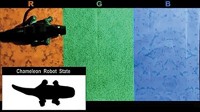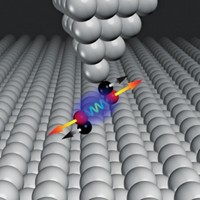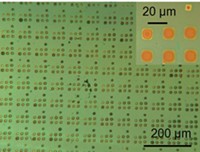Advertisement
Grab your lab coat. Let's get started
Welcome!
Welcome!
Create an account below to get 6 C&EN articles per month, receive newsletters and more - all free.
It seems this is your first time logging in online. Please enter the following information to continue.
As an ACS member you automatically get access to this site. All we need is few more details to create your reading experience.
Not you? Sign in with a different account.
Not you? Sign in with a different account.
ERROR 1
ERROR 1
ERROR 2
ERROR 2
ERROR 2
ERROR 2
ERROR 2
Password and Confirm password must match.
If you have an ACS member number, please enter it here so we can link this account to your membership. (optional)
ERROR 2
ACS values your privacy. By submitting your information, you are gaining access to C&EN and subscribing to our weekly newsletter. We use the information you provide to make your reading experience better, and we will never sell your data to third party members.
Polymers
Precise patterning of polymer brushes
Technique lets chemists control 3 variables independently and at micrometer resolution
by Bethany Halford
March 15, 2020
| A version of this story appeared in
Volume 98, Issue 10

Polymer brushes—polymer chains attached to a surface in such a way that they stand up like blades of grass from the ground—are promising for making patterned smart surfaces and microarrays for testing biological recognition and bioadhesion. The properties of polymer brush patterns depend on monomer composition, polymer height, and brush distribution across the surface. Until now, there has been no method that independently varies these parameters with micrometer resolution. By using a digital micromirror device, microfluidics, and an oxygen-free reaction chamber, chemists led by Adam B. Braunschweig at the City University of New York found they could change these three variables and create complex patterns from polymer brushes (Nat. Commun. 2020, DOI: 10.1038/s41467-020-14990-x). The setup works by introducing monomer solutions into the reaction chamber via microfluidics. A computer-controlled digital micromirror device then shines light on specific locations so that photoinduced surface-initiated atom-transfer radical polymerization occurs. Using this technique, the team can vary the composition, height, and distribution of the polymers in a brush with each pixel measuring less than 5 μm. “In the broadest terms, this is a tool for creating films and patterns for any research program where interactions at interfaces are being studied or need to be carefully controlled,” Braunschweig says.





Join the conversation
Contact the reporter
Submit a Letter to the Editor for publication
Engage with us on Twitter